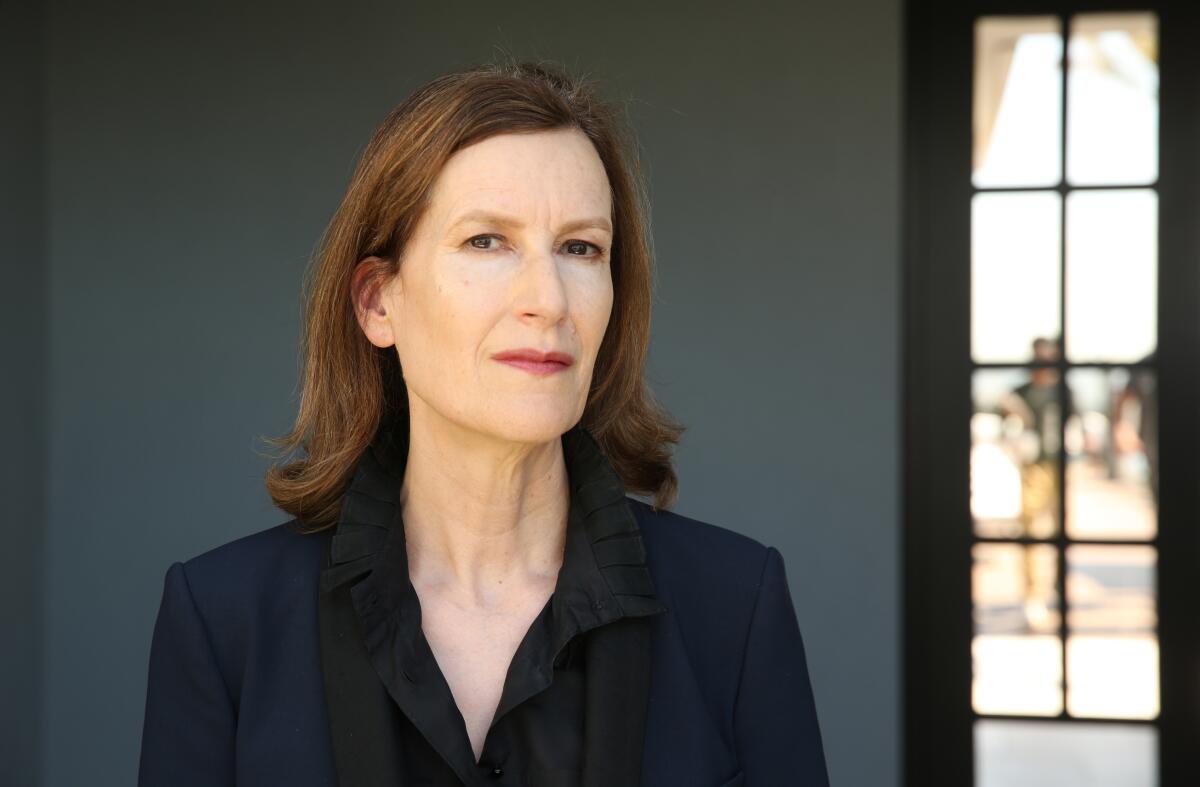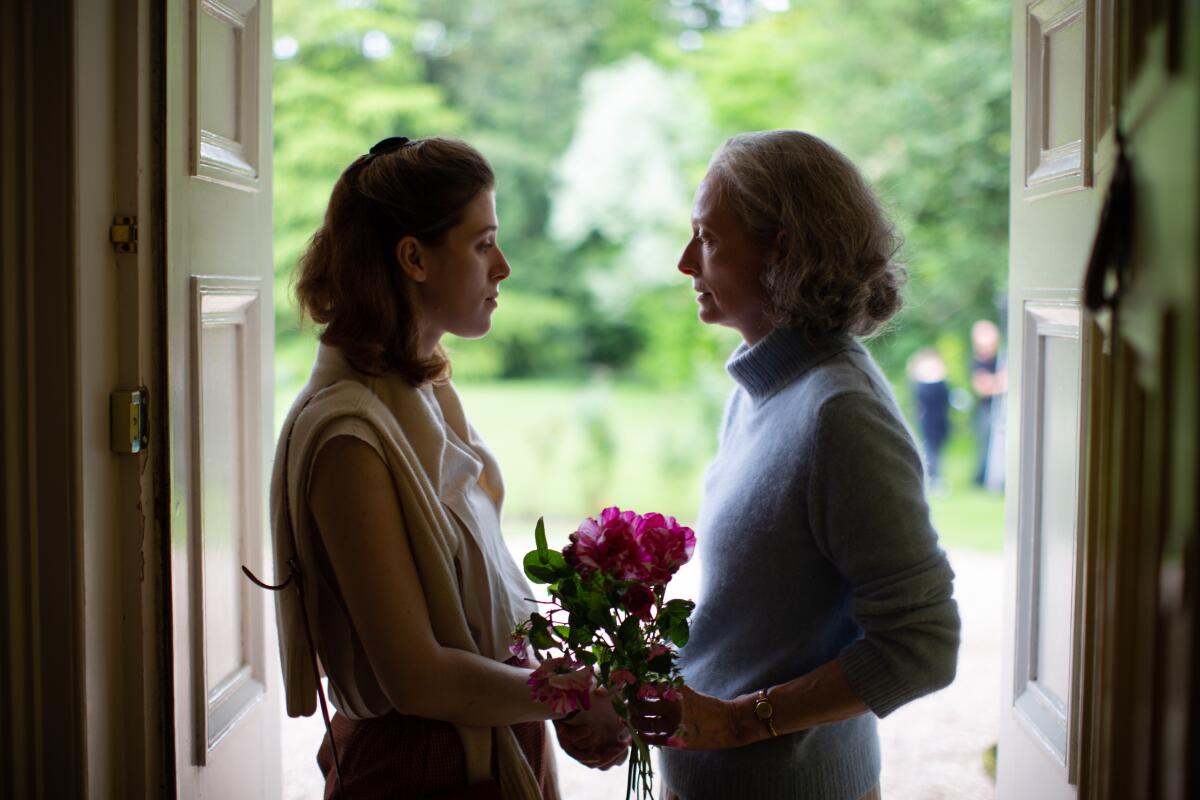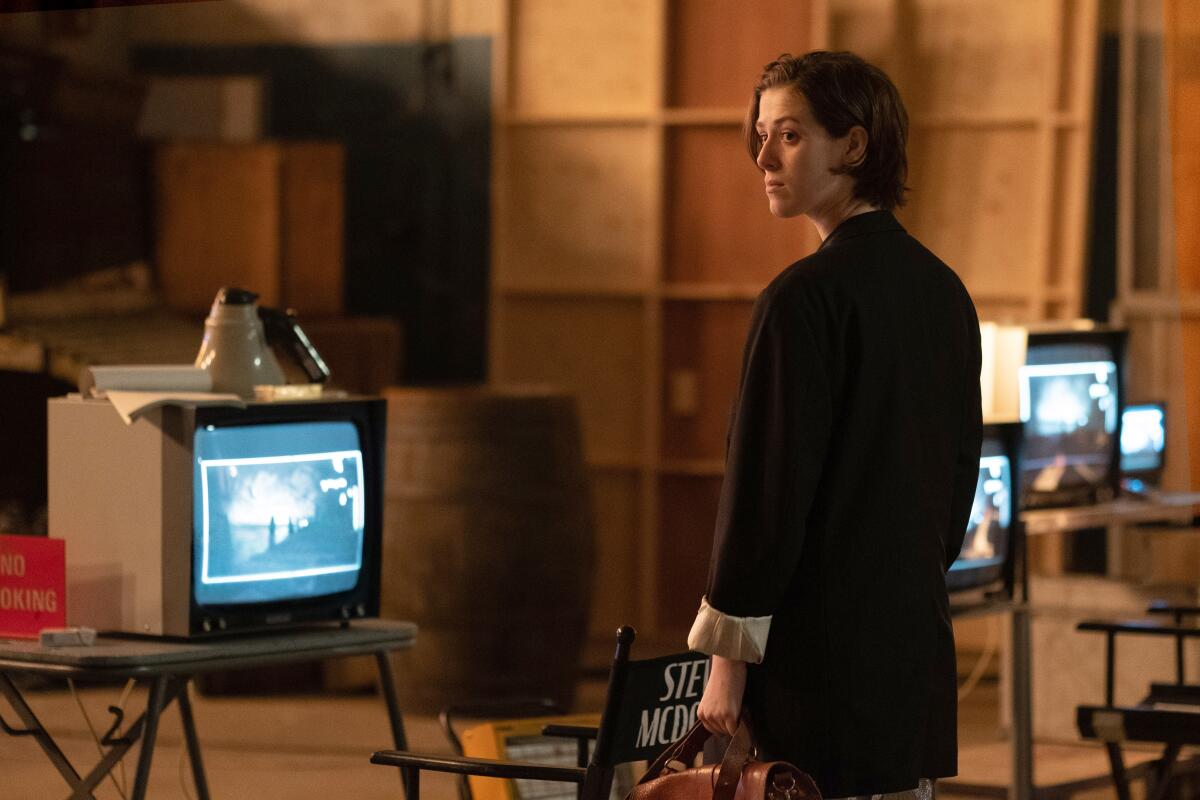Joanna Hogg mines memory but embraces storytelling for ‘Souvenir: Part II’

- Share via
Semiautobiographical in decidedly indefinite fashion, “The Souvenir: Part II,” like its 2019 predecessor “The Souvenir,” functions as meta canvas for British director Joanna Hogg.
In the first chapter, film school student Julie (Honor Swinton Byrne), a fictional stand-in for Hogg in the 1980s, falls for a cruelly alluring lover — not unlike a devastating romantic relationship the artist herself lived through as a young woman. With “Part II,” Hogg consummates a sweeping, inward-looking masterwork, one that reexamines and in certain cases amends reality, the likes of which few filmmakers reach in their careers.
A film about the making of a film, this final installment sees Julie turn into a detective trying to decipher what she underwent in the first half through the creation of her graduation film project. From the outset, Hogg was certain her emotionally embattled alter ego would dissect that experience through filmmaking but couldn’t anticipate precisely how.
“I had an idea of what the second part would be, but then when I started to prepare it after we shot Part 1, there were so many new ideas that occurred to me,” Hogg told The Envelope. “It changed quite a bit from when I first conceived Part 2 alongside Part 1. That was for many reasons because the shoot of Part 1 itself was an inspiration.”

Malleable in nature, the thematic framework of Hogg’s films — for which she doesn’t pen traditional screenplays but rather intuitive documents of ideas and references — is precise in concept but not in form. Unafraid of embracing the unpredictable that may arise from that process on set, she couldn’t be precious about every detail from her actual personal experience.
“There were times when I was a little frustrated with my memory and wished I’d remembered something more clearly. But mostly it was navigating the story in the present, so it no longer became about my own memories,” Hogg said. “It was something happening in front of me with characters portrayed by Honor and the other performers. It became something very much in the moment, rather than always looking back into the past.”
For the introductory feature, Swinton Byrne learned about the unfurling of Julie’s heartbreaking ordeal as production went along. But in the sequel, or rather the companion piece, Hogg showed the actress the document to empower her portrayal ahead of time. A more self-assured Julie, with hard-earned maturity in the aftermath of catastrophe, called for an understanding of the character’s discovery of her voice, as a woman and as a storyteller.
The maximum expression of that coming of age is the short film Julie brings to fruition within “The Souvenir: Part II,” a show-stopping, dreamlike set piece. Hogg envisioned her leading lady’s work to feel slightly similar to the film she herself made several decades ago, “Caprice,” but to also tackle the love affair she was so ill-equipped to back then.
Starring a still fresh-faced Tilda Swinton (who in turn plays concerned mother to her real-life daughter in both “Souvenirs”), the short student film “Caprice” follows a woman trapped in a magazine. Julie’s comparably exuberant vision, however, places Swinton Byrne inside the world of Jean-Honoré Fragonard’s painting “The Souvenir,” from which the pair of films take their titles.
“The making of Julie’s film was very exciting to all of us, all the crew and the cast, because we felt like we were students making it and we didn’t plan it in every detail,” said Hogg. “We didn’t have a huge budget to make our film — we had a student budget really — and we didn’t even have a lot of time, but there was something very exciting about creating something so stylized in the moment.”
Through this re-creation, and the entire two-film venture, Hogg’s conflicted feelings about the institution of higher education she attended, the National Film and Television School in Beaconsfield near London, have been reframed.

“I’m more appreciative of what film school gave me and how sometimes the fights I had were necessary ones and maybe ultimately strengthened me as a filmmaker,” said Hogg. “At the time, it didn’t feel like that and that was sometimes difficult. Now I see the positive sides and think, ‘Well, this story wouldn’t have happened but for that experience.’”
During its inception, Hogg decided her references for Part 2 would include only those that had been significant for her while at film school in the early to mid ’80s. The substantial, musical-heavy list featured Mitchell Leisen’s “Lady in the Dark,” Charles Vidor’s “Cover Girl,” Chris Petit’s “Radio On,” Ulrike Ottinger’s “Ticket of No Return,” Federico Fellini’s seminal “8 ½”(a movie about the crafting of one) and Martin Scorsese’s “New York, New York.”
An executive producer on both “Souvenir” features, Scorsese engaged in multiple cinema-adoring conversations with Hogg, most notably to discuss the influential output of Michael Powell and Emeric Pressburger’s production company, the Archers (“The Red Shoes”).
Verbally pinpointing how the idiosyncratic mélange of elements, often embedded in a fascinating self-referential dance, merge is a taxing exercise for Hogg, a director unable to watch her visions once completed. “For all the energy and time that goes into the making of a film, the process is always what’s most interesting,” she said. “I don’t linger too much on what the result is.”
More to Read
From the Oscars to the Emmys.
Get the Envelope newsletter for exclusive awards season coverage, behind-the-scenes stories from the Envelope podcast and columnist Glenn Whipp’s must-read analysis.
You may occasionally receive promotional content from the Los Angeles Times.










